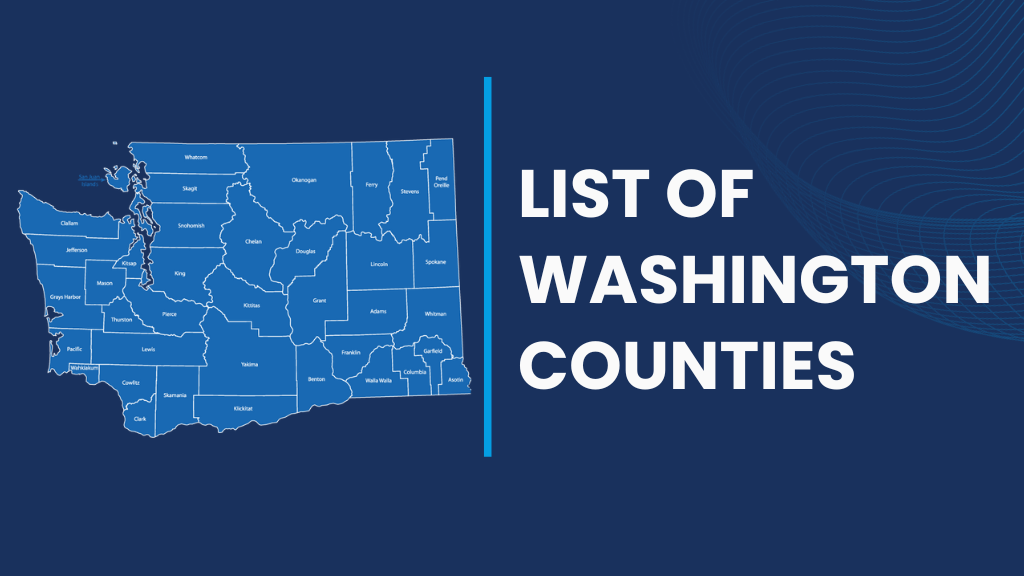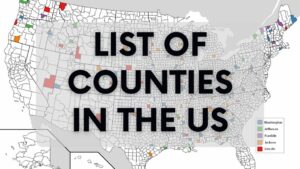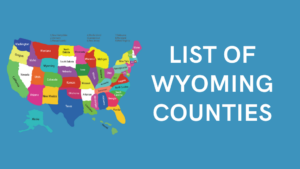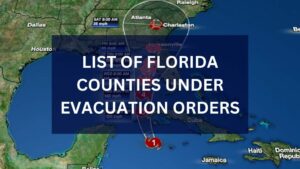The List of Washington Counties highlights the 39 unique divisions that make up the state of Washington. Each county has its own distinct history, economy, and natural beauty. From agricultural heartlands to bustling metropolitan centers, these counties together represent the diversity of the Pacific Northwest.
List of Washington Counties
Adams County
Adams County in eastern Washington has Ritzville as its seat. It is a leading wheat producer and reflects rural charm with a strong farming culture. The wide landscapes and agricultural tradition make it a vital contributor to Washington’s economy.
Asotin County
Asotin County lies in the southeast, with Clarkston as its hub. Known for its scenic views along the Snake River, it thrives on agriculture and tourism. Outdoor recreation opportunities make it an attractive destination for visitors.
Benton County
Benton County in south-central Washington is part of the Tri-Cities. It is renowned for wine production, research facilities, and its river-centered lifestyle. Agriculture and technology work hand in hand to fuel its growth.
Chelan County
Chelan County is home to Wenatchee, famous for apple orchards. Lake Chelan tourism and recreation play key roles in its economy. Its balance of farming and natural beauty make it a central Washington gem.
Clallam County
Clallam County on the Olympic Peninsula has Port Angeles as its seat. It serves as a gateway to Olympic National Park and is influenced by tribal heritage. Tourism and forestry shape its cultural and economic identity.
Clark County
Clark County borders Oregon, with Vancouver as its largest city. Its economy blends healthcare, manufacturing, and cross-border trade. As one of the fastest-growing counties, it offers both urban and natural lifestyles.
Columbia County
Columbia County, with Dayton as its seat, is the least populated in Washington. Wheat farming and historic preservation define its identity. Its small population fosters a close-knit rural atmosphere.
Cowlitz County
Cowlitz County’s seat is Kelso, while Longview is its largest city. Timber and forestry historically drove its economy. Today, healthcare, services, and manufacturing add to its development.
Douglas County
Douglas County has Waterville as its seat. It remains deeply agricultural with wheat fields and orchards. Its ties to nearby Chelan County boost commerce and tourism.
Ferry County
Ferry County’s seat is Republic. Surrounded by forests and rivers, it is rich in Native American heritage. Forestry, mining, and outdoor recreation are its primary economic activities.
Franklin County
Franklin County’s seat is Pasco, part of the Tri-Cities. Irrigation turned it into a leading producer of fruits and vegetables. Its rapid growth reflects both farming strength and urban expansion.
Garfield County
Garfield County, with Pomeroy as its seat, is the smallest by population. Farming and livestock remain central to its way of life. Its small-town spirit preserves a strong rural community.
Grant County
Grant County’s seat is Ephrata, while Moses Lake is its largest city. Agriculture dominates, supported by irrigation projects. Tourism and cultural attractions like the Gorge Amphitheatre enhance its appeal.
Grays Harbor County
Grays Harbor County’s seat is Montesano. Historically tied to logging and fishing, it also thrives on coastal tourism. Its natural landscapes highlight its Pacific coastal identity.
Island County
Island County includes Whidbey and Camano Islands, with Coupeville as its seat. Tourism, agriculture, and military bases sustain its economy. Scenic coastlines make it a popular destination.
Jefferson County
Jefferson County’s seat is Port Townsend, known for Victorian architecture and maritime heritage. Tourism, arts, and recreation are key economic drivers. It balances cultural history with outdoor adventure.
King County
King County, with Seattle as its seat, is the most populous. Its economy spans technology, aerospace, healthcare, and trade. As a cultural hub, it shapes much of Washington’s identity.
Kitsap County
Kitsap County’s seat is Port Orchard, with Bremerton as a naval hub. Military presence and shipyard industries dominate its economy. Waterfront recreation adds to its charm.
Kittitas County
Kittitas County’s seat is Ellensburg. Agriculture, especially hay production, supports its economy. The presence of Central Washington University brings culture and education.
Klickitat County
Klickitat County, with Goldendale as its seat, is known for wheat farming and vineyards. The Columbia River Gorge boosts its tourism. Scenic views and outdoor recreation define its appeal.
Lewis County
Lewis County’s seat is Chehalis, while Centralia is its largest city. Agriculture and forestry remain vital industries. Its location between Seattle and Portland strengthens its economy.
Lincoln County
Lincoln County’s seat is Davenport. A top wheat producer, it showcases rural heritage. Its landscapes emphasize traditional farming communities.
Mason County
Mason County’s seat is Shelton. Timber and forestry dominate, while Hood Canal supports fishing. Outdoor recreation plays an important role in its lifestyle.
Okanogan County
Okanogan County, the largest by land area, has Okanogan as its seat. Agriculture and outdoor recreation shape its culture. Diverse geography adds to its significance in the state.
Pacific County
Pacific County’s seat is South Bend. Fishing, oyster farming, and coastal tourism sustain it. Maritime traditions remain strong across its communities.
Pend Oreille County
Pend Oreille County’s seat is Newport. Its rivers and forests make logging and tourism important. Outdoor enthusiasts value its peaceful natural setting.
Pierce County
Pierce County’s seat is Tacoma. Manufacturing, military, and healthcare lead its economy. Mount Rainier stands as its iconic natural landmark.
San Juan County
San Juan County’s seat is Friday Harbor. Island tourism and whale watching are central. Its small-scale farming supports a sustainable lifestyle.
Skagit County
Skagit County’s seat is Mount Vernon. Agriculture thrives with tulip fields and farming. The annual Tulip Festival draws global attention.
Skamania County
Skamania County, with Stevenson as its seat, lies in the Columbia Gorge. Hiking and windsurfing attract tourism. Its natural beauty highlights conservation efforts.
Snohomish County
Snohomish County’s seat is Everett. Aerospace, led by Boeing, drives its economy. It balances rapid urbanization with natural outdoor escapes.
Spokane County
Spokane County’s seat is Spokane, eastern Washington’s hub. Healthcare, education, and manufacturing thrive here. Agriculture and recreation further support its growth.
Stevens County
Stevens County’s seat is Colville. Its rural economy relies on farming and forestry. Recreation in its forests and rivers adds to its identity.
Thurston County
Thurston County’s seat is Olympia, the state capital. Government and education dominate, supported by cultural vibrancy. Its proximity to Puget Sound boosts recreation.
Wahkiakum County
Wahkiakum County’s seat is Cathlamet. Fishing, forestry, and small communities define its character. Its riverside setting supports local traditions.
Walla Walla County
Walla Walla County’s seat is Walla Walla. Internationally recognized for wine, it also thrives on farming. Tourism continues to expand its reputation.
Whatcom County
Whatcom County’s seat is Bellingham. Trade with Canada and higher education drive its economy. Mount Baker recreation adds tourism appeal.
Whitman County
Whitman County’s seat is Colfax. Wheat farming and Washington State University sustain it. Its academic and agricultural balance is unique.
Yakima County
Yakima County’s seat is Yakima city. Agriculture dominates, with apples, hops, and vineyards. Tourism supports its diverse and growing economy.
Conclusion
The List of Washington Counties showcases the state’s incredible diversity, where each county contributes to a shared identity. Metropolitan hubs like King, Pierce, and Snohomish anchor Washington’s economic growth through technology, aerospace, and trade, while agricultural centers such as Yakima, Grant, and Franklin preserve its farming traditions and ensure food security. Coastal counties like Pacific, Grays Harbor, and Clallam highlight maritime industries, fishing, and tourism, while inland areas like Stevens, Ferry, and Pend Oreille emphasize natural resources and outdoor recreation. Smaller counties such as Garfield, Columbia, and Wahkiakum maintain Washington’s rural charm and community values, balancing the influence of larger urban regions. Collectively, these counties represent the strength of Washington’s landscapes, industries, and cultural heritage. They sustain the state’s economy, enrich its culture, and protect its natural treasures. By exploring the counties in detail, one gains a deeper appreciation of Washington not only as a thriving state but also as a symbol of resilience, opportunity, and unity. The counties together weave a narrative of progress and tradition, ensuring that Washington remains dynamic and inspiring for generations to come.
FAQs
How many counties are in Washington?
Washington has 39 counties across the state.
Which is the largest county in Washington?
Okanogan County is the largest by land area.
Which is the most populous county in Washington?
King County, home to Seattle, is the most populous.
What is the smallest county in Washington by population?
Garfield County has the smallest population.
Which counties are part of the Tri-Cities region?
Benton, Franklin, and sometimes Walla Walla counties form the Tri-Cities area.





